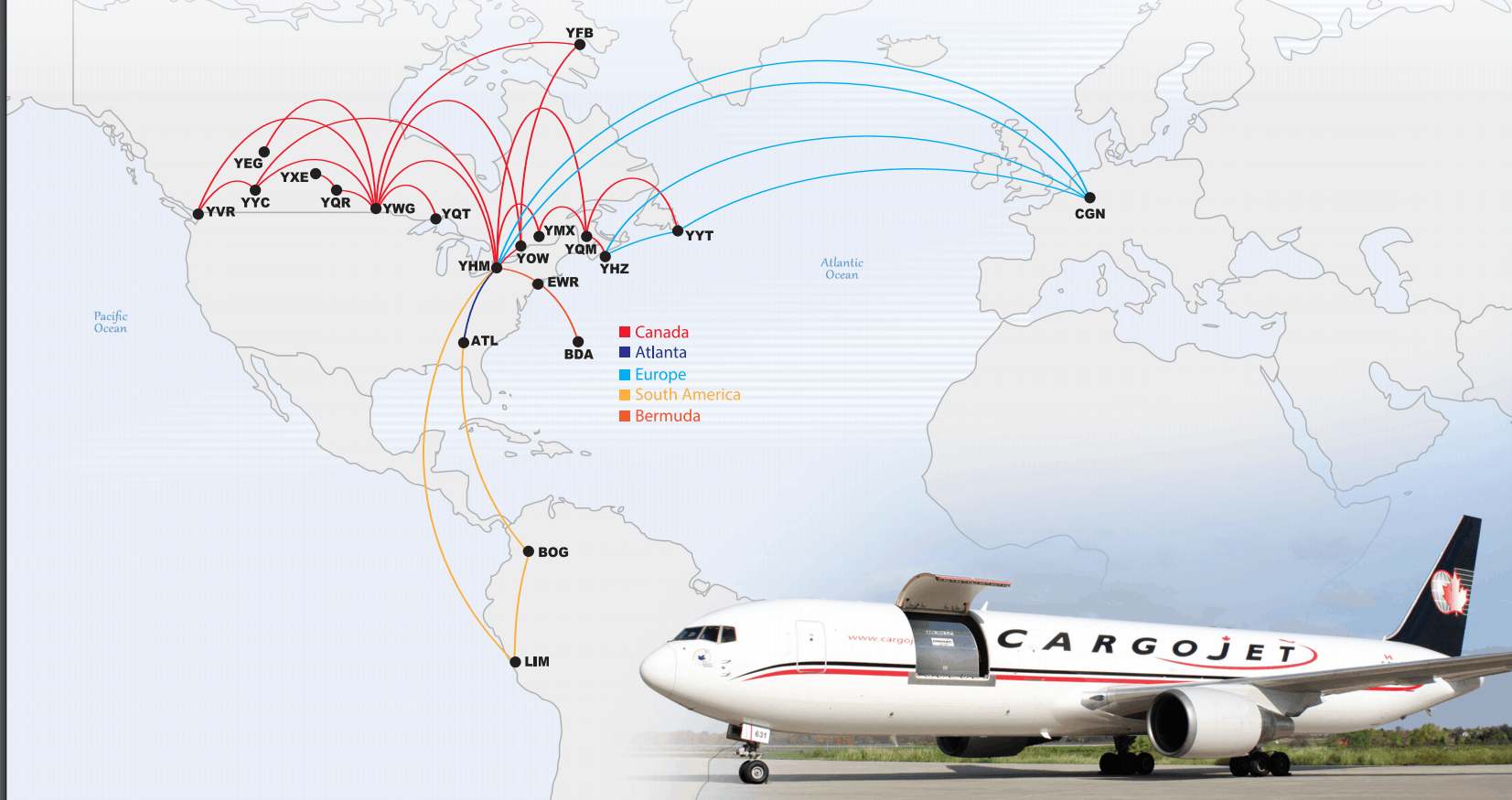
It’s a space that got a lot of attention during the height of the pandemic but has seen less love of late. But e-commerce is not only here to stay, it’s got some strong Canadian chops from a number of angles.
First up is Cargojet (Cargojet Stock Quote, Charts, News, Analysts, Financials TSX:CJT) which zoomed ahead to a double last year as the overnight cargo company saw a tonne of business both domestically and internationally through its ACMI (aircraft, crew, maintenance and insurance) and charter plane segments.
Cargojet grew its earnings by 87 per cent in 2020 and its revenue by 37 per cent, and while the one-year comparables for its latest quarter were less enticing — revenue was $172.1 million for its second quarter 2021 versus $196.1 million a year earlier and adjusted EBITDA was $67.4 million compared to $80.2 million a year earlier — Cargojet is still likely to have a lot of growth ahead of it, according to portfolio manager Bryden Teich of Avenue Investment Management. Teich says CJT’s great year in 2020 speaks to the company’s strong position in the fast-delivery cargo space, which has become more the norm for e-commerce.
“If you order packages in Canada, anywhere across the country, there’s a very high probability that at some point on the route to your house it was flown on the Cargojet plane,” said Teich, speaking last month on BNN Bloomberg where he named CJT one of his Top Picks for the next 12 months.
“Obviously, the pace of growth has slowed and so some people kind of treated [Cargojet] like a hot stock last year. We had added to our position earlier in the year because we thought it got too low, but we think at 12x EBITDA the valuation is very compelling,” Teich said.
“Our five-year rough target would be we think it gets to a billion in revenue and 35 or 40 per cent margins. We can see the stock still significantly higher than here. It looks like it has digested most of the equity issuance this year and it looks poised to move higher, so we’re very happy to own it here, and we think it’s still trading at a very attractive valuation,” he said.
Another clear beneficiary of the pandemic’s increased online shopping traffic was Montreal’s Lightspeed Commerce (Lightspeed Commerce Stock Quote, Charts, News, Analysts, Financials TSX:LSPD), which at first glance might not have seemed like the best bet during COVID since its jam is squarely in the small and medium-sized business market – stores, restaurants and hospitality, all sectors that got hit badly during COVID and use Lightspeed’s payments, accounting, analytics and other solutions.
Yet Lightspeed turned out to be a prime way for these very businesses to up their digital game, making LSPD’s platform a more valuable piece of their operations in an increasingly online world.
“As economies reopen and new business creation accelerates, Lightspeed’s one-stop commerce platform is emerging as the technology of choice for retailers and restaurateurs the world over” said Dax Dasilva, Founder and CEO of Lightspeed, in the company’s most recent quarterly press release, its fiscal first quarter 2022, released in early August.
Through both organic and a lot of inorganic growth, LSPD saw revenue jump by 220 per cent for its fiscal Q1 to $115.9 million, with an adjusted EBITDA loss of $6.0 million.
One Lightspeed fan is portfolio manager David Burrows of Barometer Capital, who last month also named LSPD a Top Pick for the year ahead. Burrows thinks Lightspeed’s growth during the post-pandemic period will be just as interesting as the journey so far.
“Lightspeed is a natural beneficiary of the reopening,” Burrows said, speaking on BNN Bloomberg in September. “Lightspeed sells a suite of products into the retail industry, hospitality, restaurants, gaming and they help them manage inventory, they help them run their staff, and they’ve made some excellent acquisitions along the way, one of them, specifically in the payments area. So they’re growing their business nicely organically.”
“If you look at their revenues, a small portion has been the payments business, but they recently said that they expect to get 50 per cent penetration with their payments product with their existing client base, which, to put a point on it, has payments now about $200 million in 2022. If they got to 50 per cent by 2025 that’d be another $2.5 billion in revenue,” Burrows said.
Last up is mdf commerce (mdf commerce Stock Quote, Charts, News, Analysts, Financials TSX:MDF), which works on the other side of the spectrum from Lightspeed in handling e-commerce for enterprise and government customers, covering procurement and publishing solutions, online marketplaces and SaaS business solutions.
mdf’s share price did great in 2020 but this year has been more of a challenge, with the stock currently down by more than half. But there’s more buzz around the company after the recent acquisition of procurement company Periscope for $264 million, a company whose scale is similar in size to mdf’s own.
“They’re consolidating [the public procurement] industry, which is very regional and very fragmented in the US and they’ve been making acquisitions in that space, which is very synergistic for them,” said portfolio manager Stephen Takacsy of Lester Asset Management, who spoke on BNN Bloomberg in late August.
“You have 80 per cent of their sales which are high-margin, recurring SaaS revenues. It’s dirt-cheap and trading at around 2x revenue when all their peers are trading at 4-8x and as high as 40x for the likes of Shopify,” he said. “This company is much more valuable than it’s trading at today.”
Leave a Reply
You must be logged in to post a comment.





 Share
Share Tweet
Tweet Share
Share




Comment